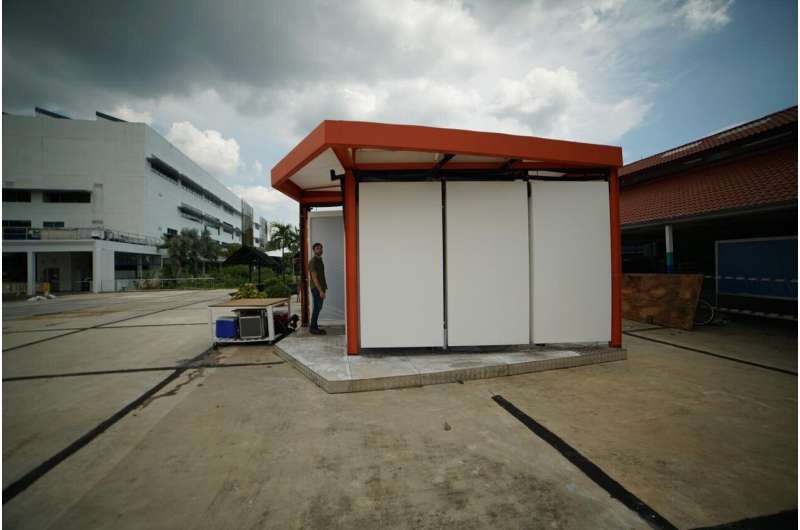Cool and COVID-safe: How radiant cooling could keep our cities comfortable and healthy

A novel system of chilled panels that can replace air conditioning can also help reduce the risk of indoor disease transmission, suggests new analysis from the University of British Columbia, University of Pennsylvania and Princeton University.
The researchers computed air conditioning requirements in 60 of the world's most populous cities—with the additional ventilation required due to COVID-19. Then, they compared the energy costs with their cooling method, using the chilled panels and natural ventilation.
The results, published in the COVID-19 edition of Applied Energy, showed that the alternative solution can save up to 45 per cent of the required energy, while ensuring building occupants are comfortable and rooms are adequately refreshed.
Dr. Adam Rysanek, a professor in the school of architecture and landscape architecture at UBC and co-author of the paper, notes that many public health guidelines, as well as building industry bodies, recommend increasing the flow of fresh, outdoor air into buildings in order to reduce the risk of spreading COVID-19 and other diseases.
"However, if we continue to rely on conventional HVAC systems to increase indoor fresh air rates, we may actually double energy consumption. That's the nature of conventional HVAC."
"Alternatively, we can encourage people to install new types of radiant cooling systems, which allow them to keep their windows open even when it's hot outside. These alternative systems can provide a sufficient level of thermal comfort, increase protection against disease while lessening the impact on the environment," noted Rysanek, director of the Building Decisions Research Group at UBC's faculty of applied science.
Rysanek and his colleagues earlier demonstrated their cooling system in the hot and humid climate of Singapore. They built a public pavilion featuring a system of chilled tubes enclosed within a condensation-preventing membrane. This allowed occupants to feel comfortable, and even cold, without changing the air temperature surrounding the human body.
"You can think of it as lean A/C—or, even better, as a green alternative to energy-guzzling air conditioning," said Rysanek.
Toronto is one of the cities included in the latest analysis, as are Beijing, Miami, Mumbai, New York and Paris. In all these regions, peak summer temperatures can soar past 35 degrees Celsius (95 degrees Fahrenheit).
"A key impact of climate change is the accelerating rise in average and peak temperatures, particularly in urban areas. We are expecting the appetite for indoor cooling will ramp up in the years ahead. Yet, if we want to mitigate urban heat and ensure people are healthy and comfortable while reducing our energy use, we need to seriously consider revolutionizing our historical approach to air-conditioning," adds Rysanek.
Rysanek notes that, though chilled panel systems have been around for decades, adding the special membrane devised by the research team could be the key to making it a commercially viable alternative to traditional HVAC systems in all climates.
More information: Dorit Aviv et al, A fresh (air) look at ventilation for COVID-19: Estimating the global energy savings potential of coupling natural ventilation with novel radiant cooling strategies, Applied Energy (2021). DOI: 10.1016/j.apenergy.2021.116848


















